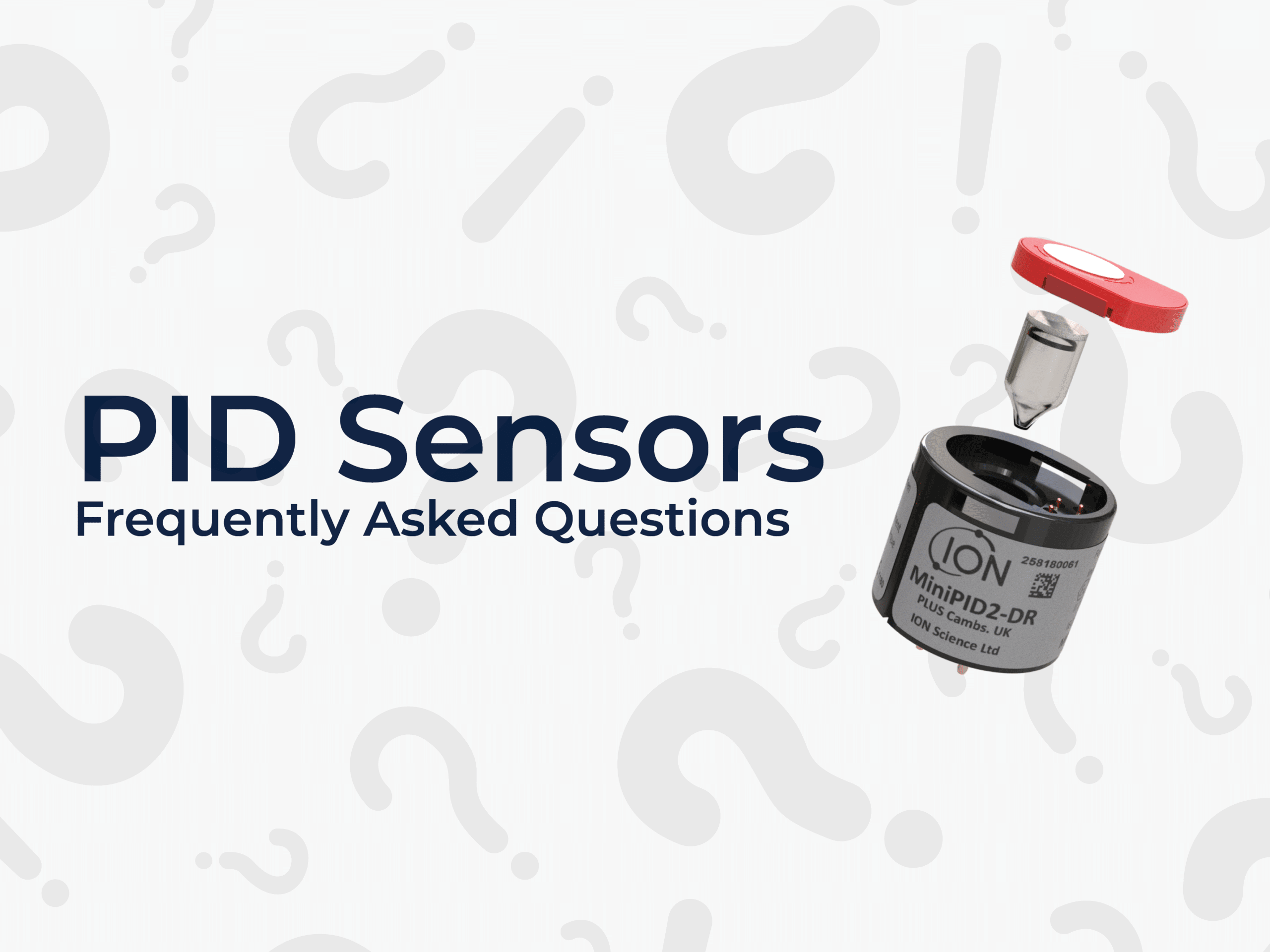
Everything you need to know about PID Sensors
PID stands for “Photo-Ionisation Detector”. PID (Photoionisation Detection) sensors are essential tools for monitoring air quality and can be incorporated into a hand-held, personal, or fixed detector for the detection of volatile organic compounds (VOCs) and some inorganic compounds.
ION Science sensors can detect VOCs down to parts-per-billion (ppb) and up to thousands of parts-per-million (ppm). In this article ‘Everything you need to know about PID Sensors’, we’ll answer some frequently asked questions about PID sensors to help you better understand their applications, advantages, and importance across various industries.
-
What is a PID Sensor?
A PID sensor is a device used to measure and monitor volatile organic compounds (VOCs) to very low concentrations and other gases in the air. It relies on a process called photoionisation to detect and quantify these substances.
-
How Does a PID Sensor Work?
A PID sensor works by irradiating a gas sample with ultraviolet light. This light energy ionizes the gas molecules, producing positively charged ions and an electron. The resulting ionization current from the electrons is proportional to the concentration of the VOCs in the sample.
-
Where Are PID Sensors Used?
PID sensors are used in a variety of industries, including environmental monitoring, industrial safety, hazardous material response, indoor air quality assessments and ambient outdoor air quality.
-
What Are the Key Advantages of PID Sensors?
PID sensors offer fast and accurate measurements, real-time monitoring, and the ability to detect a wide range of VOCs. They are also portable and easy to use, making them versatile tools for many applications.
-
What Types of VOCs Can PID Sensors Detect?
PID sensors can detect a broad spectrum of VOCs, including solvents, fuels, pesticides, and other organic compounds.
-
Are PID Sensors Safe to Use?
Yes, PID sensors are safe to use when operated according to manufacturer instructions. They are designed to be non-destructive and non-invasive.
-
How to Calibrate a PID Sensor?
Calibrating a PID sensor involves exposing it to a known concentration of a specific VOC and recording the mV response for that known concentration. This is often done at the zero point, at the midpoint and at the end of the detection range. . Regular calibration ensures accurate readings.
-
What Factors Can Affect PID Sensor Accuracy?
Environmental conditions, sensor contamination, and the presence of interfering compounds can affect some PID sensor accuracy on the market. ION Science’s innovative feature of humidity-resistance helps maintain optimum sensor performance in challenging humidity conditions, contributing to reliable and accurate readings in diverse environments.
-
Can PID Sensors Detect Gas Concentrations in Real-Time?
Yes, PID sensors provide real-time measurements, allowing for immediate response to changing gas concentrations.
-
How to Choose the Right PID Sensor for Your Application?
Consider factors like the range of VOCs you need to detect, required sensitivity, environmental conditions, and the intended application when choosing a PID sensor.
-
What Are the Maintenance Requirements for PID Sensors?
Regular maintenance, including cleaning, calibration, and sensor replacement, is crucial to ensure PID sensors operate optimally.
-
Are PID Sensors Compatible with Data Logging and Remote Monitoring Systems?
Yes, many PID sensors can be integrated into data logging and remote monitoring systems for enhanced data collection and analysis.
-
What Should You Consider When Handling and Storing PID Sensors?
Proper storage and handling are essential to prevent damage to PID sensors. This includes protecting them from extreme temperatures and physical damage.
-
How Do PID Sensors Compare to Other Gas Detection Technologies?
PID sensors excel in detecting VOCs but may not be suitable for all gas types. Compare them to other gas detection technologies to determine the best choice for your needs.
-
Can PID Sensors Detect Combustible Gases?
While PID sensors are primarily designed for VOC detection, some models can detect combustible gases indirectly by measuring changes in VOC concentration.
-
What Are the Future Developments in PID Sensor Technology?
Future developments may focus on improved sensitivity, lower detection limits, and enhanced data integration capabilities.
For more information on MiniPID 2, watch the video here.
Conclusion
PID sensors are valuable tools for detecting and quantifying VOCs in various applications. Understanding their operation, maintenance, and suitability for different industries is crucial for their effective use. As technology advances, PID sensors continue to play a significant role in ensuring air quality and safety.
This ‘Everything you need to know about PID Sensors’ article provides a comprehensive overview of PID sensors, helping you make informed decisions when considering this technology for your specific application.
Do you have a question for the ION Science Sensor Team?
Ask the question below!







 United Kingdom
United Kingdom






